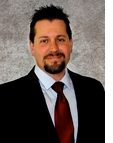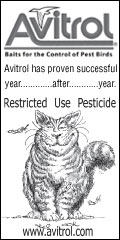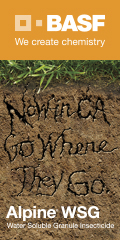
| July 2015 | Past Issues | Printer-Friendly | Advertise | Affiliates Search | Find a Pest Control Operator | PCOC.org |
|
EVP NOTES
 California is the nation’s most populous state as
we all know. It is also the nation’s top tax collector. You have all heard me
say that we live in the nation’s highest-taxed and highest-regulated state...well
now we have some proof, thanks to a new U.S. Census Bureau report! California is the nation’s most populous state as
we all know. It is also the nation’s top tax collector. You have all heard me
say that we live in the nation’s highest-taxed and highest-regulated state...well
now we have some proof, thanks to a new U.S. Census Bureau report!
During the 2013-2014 fiscal year, California collected 138.1 billion in taxes. This is a whopping 16 percent of all state taxes collected in the nation and more than the next two states, New York and Texas, combined. Personal and corporate income taxes, $76.9 billion, accounted to 55.6 percent of California’s revenues and were nearly a quarter of all the state income taxes in the nation. Sales taxes generated $50 billion in our fair state. Licensing, taxes and fees another $8.9 billion. The $138.1 billion in California taxes amounts to $3,560 per resident...which is one of the highest per capital taxation levels....but not, believe it or not, the highest. That dubious honor goes to New York, which collected $3,908 per resident. Maybe we should all move to Texas which has no income tax. Its state taxes amounted to just $2,048 per person. I am not serious when I say we should all move to Texas because, as you know, small businesses, established pest control companies on Main Street, do not have the luxury (or, in many cases, the desire) to move out of state. The solution is to educate our elected officials on the burdens that pest control companies face in this great state. LEGISLATIVE UPDATE
IN THE NEWS

WHAT HAS PCOC DONE FOR US LATELY – BIRD
WORK:
Many pest control companies in California perform bird abatement work in a variety of manners as part of their regular income for residential, commercial or even government projects. This form of work in our industry accounts for millions of dollars annually throughout the state. Recently, I received a
call from one of our members concerning bird work and the Contractors State
Licensing Board (CSLB). This member, who does extensive amounts of bird work
including contracts for state agencies such as CalTrans, was being told that "currently
birds were not covered under branch two for general pest and even when they
were listed the limit was catch and release not prevention. They would need to hold the D64 – Non-Specialized classification for "Bird
Abatement" through the CSLB to perform any work totaling $500 or more."
This member had several contracts totaling hundreds of thousands of dollars they were being told they could not perform until they received the appropriate license. After consulting with a few of our members and the Structural Pest Control Board (SPCB), I sent a response email. Note: I have removed the names from the email for this article including the member involved. I am with the Pest Control Operators of California. We are the trade association for the pest control industry in California and have been consulting with the Structural Pest Control Board regarding this issue. I received an email from [one of our members] regarding a response you sent him on bird work and what a branch 2 general pest control licensed company can do.... Branch 2 general pest control licensed companies have historically been empowered through the Structural Pest Control Board to perform bird abatement work without any additional licenses including the C-61/D-64 Non-Specific contractor’s license category. The most prominent code supporting this is B&P Code 8505 in the Structural Pest Control Act where it defines what structural pest control is which includes "the making of contracts, or the submitting of bids for, or the performance of any work including the making of structural repairs or replacements, or the use of insecticides, pesticides, rodenticides, fumigants, or allied chemicals or substances, or mechanical devices for the purpose of eliminating, exterminating, controlling or preventing infestations or infections of such pests, or organisms. ‘Household pests’ are defined for the purpose of this chapter as those pests other than wood destroying pests or organisms, which invade household structures and other structures, including, but not limited to, rodents, vermin and insects." I added the underlines for emphasis. Since the structural pest control act (and 8505 in particular) was first promulgated in the 1930s, Branch 2 licensees have been empowered to perform both reactive and preventative controls to address vermin such as birds, bats and other vertebrate and invertebrate pests. At the heart of controlling pests (especially vertebrate pests) has always included the installation of mechanical devices, correcting and changing architectural features that favor harborage or access. Regardless as to if the individual performing bird control is a branch 2 licensee or a contractor with a D64 non-specialized classification, they would still need to be in compliance with all other state and federal laws governing birds and other vertebrate animals. The licensing requirements from the CSLB do not apply to Pest Control Licensees performing work under the scope of their license as spelled out in B&P Code 7051 which is under the contractor's section of the B&P code: This chapter does not apply to a licensed architect or a registered civil or professional engineer acting solely in his or her professional capacity or to a licensed structural pest control operator acting within the scope of his or her license or a licensee operating within the scope of the Geologist and Geophysicist Act. Back in 2003, the CSLB had agreed with the Structural Pest Control Board (SPCB) position that Branch 2 licensees can continue to install bird control and exclusion devices as we have done in the past — see the Structural Pest Control Board minutes from July 18, 2003 where it states: "Contractors State License Board (CSLB) has been contacted regarding issuance of licenses in a special category for bird control. CSLB agreed to provide a list of those licensees; who will be contacted and informed they have to be licensed by the Structural Pest Control Board if they practice pigeon control." Up until just recently, a person performing bird work for pigeons had to be a Branch 2 general pest control licensed individual under B&P Code 8555(g). Since the Merrifield v. Lockyer case, this section was overturned, but this overturning does not exclude branch 2 companies from performing such work. I was able to speak with the Executive Officer and Assistance Executive Officer of the Structural Pest Control Board in regards to this issue. They have agreed that branch 2 licensees should be able to perform bird control work as under the definitions of B&P Code 8505, and if you wish for confirmation, you may contact them. Thank You At first, we received resistance from
the CSLB, so I informed the SPCB. The Assistant Executive Officer from the SPCB
met with a representative from the CSLB to defend our position. After this meeting, I received an
email from the CSLB agreeing that Branch 2 pest control operators are exempt
from the D-64 license under B&P Code 7051.
These are the sorts of things PCOC does for the pest control industry to help protect our businesses and way of life. I would like to thank Eric
Paulsen from Clark Pest Control for all of his help and expertise on this
matter. I would also like to thank Robert Lucas from the Structural Pest
Control Board for his involvement in resolving this issue.
UPCOMING EVENTS
2015
17th Annual PCOC Fishing Trip — August 6-7, 2015
FLIER Board of Directors Meeting — September 25- 26, 2015 Catamaran Resort — San Diego Golf Tournament Registration Board of Directors Meeting — December 11-12, 2015 Palm Springs Hilton — Palm Springs, California Comings and Goings
Welcome to a new section of Newsbriefs! Here, we will give news from our members: new hires, retirements, etc. If you have some news you would like to share, please send a short sentence or two to breann@pcoc.org. MEMBER NEWS
MEMBER VALUE PROGRAM
PCOC MONTHLY INSURANCE/SAFETY TIP
How Subrogation Works
When an employee
successfully sues a third party for a work-related injury in addition to
collecting workers’ compensation, the employer’s workers’ compensation insurer
may be able to "subrogate" the claim. Subrogation prevents an injured worker
from collecting twice for the same injury. Unlike the workers’ compensation system, the tort system allows an injured person who prevails in a lawsuit to receive compensation for lost wages (past, present and future), pain and suffering, property damage, loss of monetary support, loss of consortium, disfigurement and sometimes punitive damages. When an employee collects tort damages or other settlements in addition to workers’ compensation payments, the employer’s insurer or the employer has the right to "subrogate," or claim a credit against any settlement or recovery received. Subrogation prevents an injured worker from collecting for the same injury twice. It also helps control workers’ compensation costs. If the employee chooses not to sue a third party that might have caused or contributed to his/her injuries, the employer or the employer’s insurer might sue to recover any claims it paid to the injured worker. Black’s Law Dictionary calls this kind of subrogation "...the right to step into the shoes of the party whom they compensate and sue any party whom the compensated party could have sued." Laws governing workers’ compensation subrogation vary from state to state. Some states are "first dollar states," which give employers priority in recouping their costs out of any verdict or settlement. Some states also allow the employer to recover any increase in workers’ compensation premiums due to the injury. Other states require the full rehabilitation of the worker, or that the employee be "made whole," before the employer or insurer recover any of costs. If third-party negligence might have played a role in one of your workers’ compensation claims, good documentation can increase the chances of a successful subrogation. This includes interviewing the victim and any witnesses, photographing the accident scene immediately following the accident and saving any evidence. If your insurer declines to subrogate, or if you self-insure for workers’ compensation, an attorney with expertise in this area can help you with the subrogation process. Subrogation Provisions Most workers’ compensation policies include subrogation provisions. These give the insurer the right to recover claims paid from anyone liable for an injury covered by the policy. But in some instances, an employer might not want an insurer to go after a third party for recovery of a claim. This can happen when the injury occurs on a client’s premises or when the employer has a contract with a general contractor or government entity that requires the insurer to waive its subrogation rights. Employers can ask their workers’ compensation underwriter to add a "waiver of
subrogation" provision to their policy, which will waive the insurer’s rights
to pursue recovery from a third party.
NEW MEMBERS
FREQUENTLY REQUESTED INFORMATION
NPMA LOGIN FOR JOINT MEMBERSHIP LOGIN: 313501 PASSWORD: PCOC
Department of Food & Agriculture Department of Pesticide Regulation (DPR)
www.cdpr.ca.gov DPR on Facebook www.facebook.com/capesticideregulation DPR on YouTube (see "playlists" for videos pertaining to new surface water regulations) www.youtube.com/user/californiapesticides DPR on Twitter twitter.com/ca_pesticides DPR LinkedIn www.linkedin.com/company/california-department-of-pesticide-regulation Healthy Schools Act http://apps.cdpr.ca.gov/schoolipm/ Structural Pest Control Board www.pestboard.ca.gov Find Your Legislator |
Pest Control Operators of California |
 |





